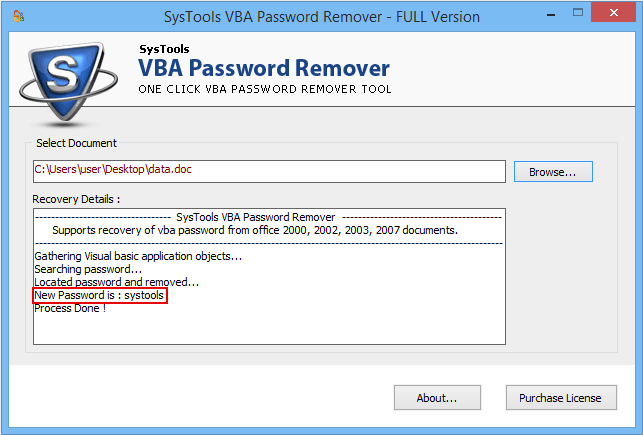Webcoder 2007 Crack
Shareware Junction periodically updates pricing and software information of full version from the publisher using pad file and submit from users. Software piracy is theft, Using crack, password, serial numbers, registration codes, key generators, cd key, hacks is illegal and prevent future development of Edition. Download links are directly from our publisher sites.
Links from Bittorrent, mediafire.com, uploadfiles.com, hotfiles.com rapidshare.com, megaupload.com, netload.in, storage.to, depositfiles.com and other files hosting are not allowed. The download file is obtained directly from the publisher, not from any Peer to Peer file sharing applications such as Shareaza, Limewire, Kazaa, Imesh, eDonkey, eMule, Ares, BearShare, Overnet, Morpheus, BitTorrent Azureus and WinMX.
Review This Software.
Multi-Layer OrganicComponents (MLO) - a new material & process for RF components: Capacitors,Inductors, Filters and DiplexersTheMultilayer Organic (MLO™) family of components is based around a non-fired, lowloss organic dielectric material system which offers stable low lossperformance from DC well into microwave frequencies. MLO materials are analternative to traditional fired components such as LTCC and ceramics. Theunique MLO material system allows the manufacturer to realize low loss RFpassive devices including custom filters, diplexers, couplers, inductors,capacitors as well as the ability to integrate components into modules formultiband applications. The MLO material system characteristics will bediscussed and a brief comparison to competing LTCC and multilayer ceramictechnologies will be provided. MLO devices have the potential ability toreplace traditional broad band passives – examples to be shown.About the SpeakerRonDemcko graduated in 1982 from the Clarkson College of Technology, where hereceived his BSEE.
He worked in application and product development roles withmilitary qualified, radiation resistant passive components at Corning Glassworks. New product areas of development he was involved in included pulseresistant capacitors, high temperature capacitors and radiation resistantsingle layer capacitors. While at Corning, he also developed high frequencytest methods for RF capacitor parametric characterization and production. He alsoco-developed high temperature test systems for advanced product lines. He iscurrently an AVX Fellow and manages the AVX EMS lab in Raleigh, NC. This rolecenters on working with sub assembly testing and the implementation of passivecomponent fixes. Primary base material systems are - zinc oxide varistors,ceramic capacitor materials, thin film material systems and glass materialsystems.
Product development areas include integrated passive components,signal integrity system fixes and transient voltage suppression devices.Detection of Cracked Multi-Layer CeramicCapacitors on Printed Circuit Board AssembliesDr. Michael H.AzarianDespite theimproved performance of multi-layer ceramic capacitors, the occurrence ofcracks during the solder assembly and handling process still presents aproblem, especially for high reliability applications. Conventional crackdetection techniques, such as X-ray imaging or measurement of electricalparameters, are often effective on loose capacitors. However, there are still no non-destructiveand rapid technique to be used on capacitors assembled onto PCBs in a circuit.This presentation will describeresearch conducted at CALCE on the use of time domain reflectometry (TDR) as anon-destructive method of crack detection in MLCCs.
Size 0805 and 1812 MLCCswere assembled to FR-4 test boards and subjected to flexure to inducecracking. Flex cracking in theseelectrically isolated capacitors was observed and verified through conventionaltechniques such as insulation resistance measurements and X-ray imaging. TheTDR reflection coefficient was observed to increase for cracked MLCCs.Cross-sectional analysis was performed in order to relate the sensitivity ofthe method to the crack characteristics.Further experiments wereperformed using the same technique on cracked capacitors within circuits on PCBassemblies, where interconnection to other components makes conventionalelectrical characterization unfeasible.
It was shown that the distinction betweenhealthy and cracked MLCCs on assembled PCBs is possible. The test resultsindicate that time domain reflectometry can serve as a non-destructive means toidentify flex cracks in multilayer ceramic capacitors on PCB assemblies. About the SpeakerDr. Azarian is a researchscientist and member of the graduate faculty at the Center for Advanced LifeCycle Engineering (CALCE) at the University of Maryland. He holds a Masters and Ph.D. In MaterialsScience and Engineering from Carnegie Mellon University, and a Bachelor’sdegree in Chemical Engineering from Princeton University.Prior to joining CALCE in 2004he spent over 13 years in the data storage, advanced materials, and fiberoptics industries.

His research on reliability of electronic products has ledto numerous publications on electronic packaging, component reliability,condition monitoring, and tribology. He is the holder of five U.S. Patents.He has ledseveral standards committees on reliability for the IEEE, and he is currentlyco-chair of the Miscellaneous Techniques subcommittee of the SAE G-19Astandards committee on detection of counterfeit parts.
Webcoder 2007 Crack Full

Webcoder 2007 Crack Version
He previously co-chaired iNEMI's TechnologyWorking Group on Sensor Technology Roadmapping. He is on the Editorial AdvisoryBoard of Soldering & Surface Mount Technology.A Reliability Model for Ni-BaTiO3-Based(BME) Ceramic CapacitorsThe evaluationof multilayer ceramic capacitors (MLCCs) with base-metal electrodes (BMEs) forpotential NASA space project applications requires an in-depth understanding oftheir reliability. The reliability of an MLCC is defined as the ability of thedielectric material to retain its insulating properties under statedenvironmental and operational conditions for a specified period of time t.In thispresentation, a general mathematic expression of a reliability model for a BMEMLCC is developed and discussed.